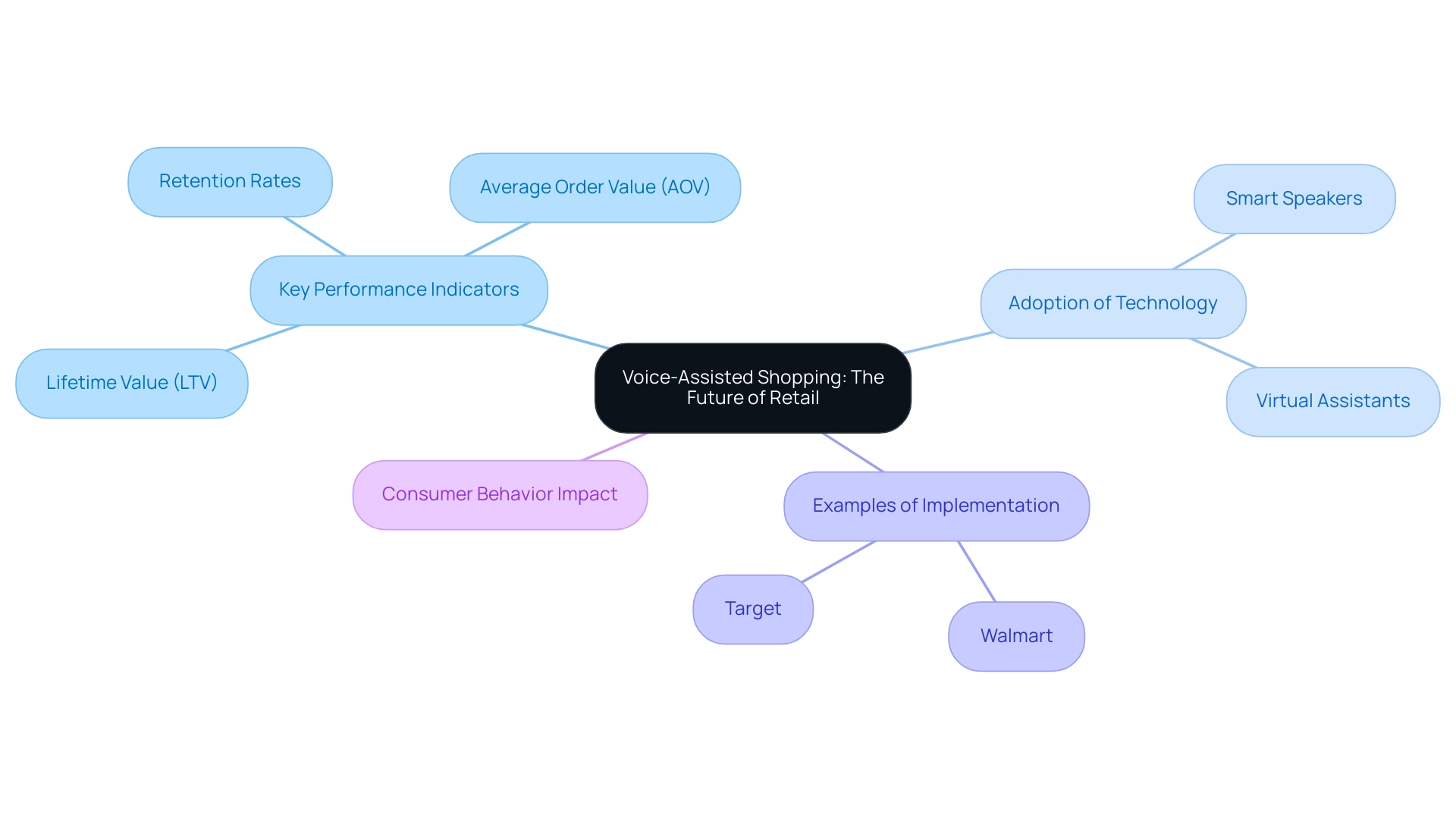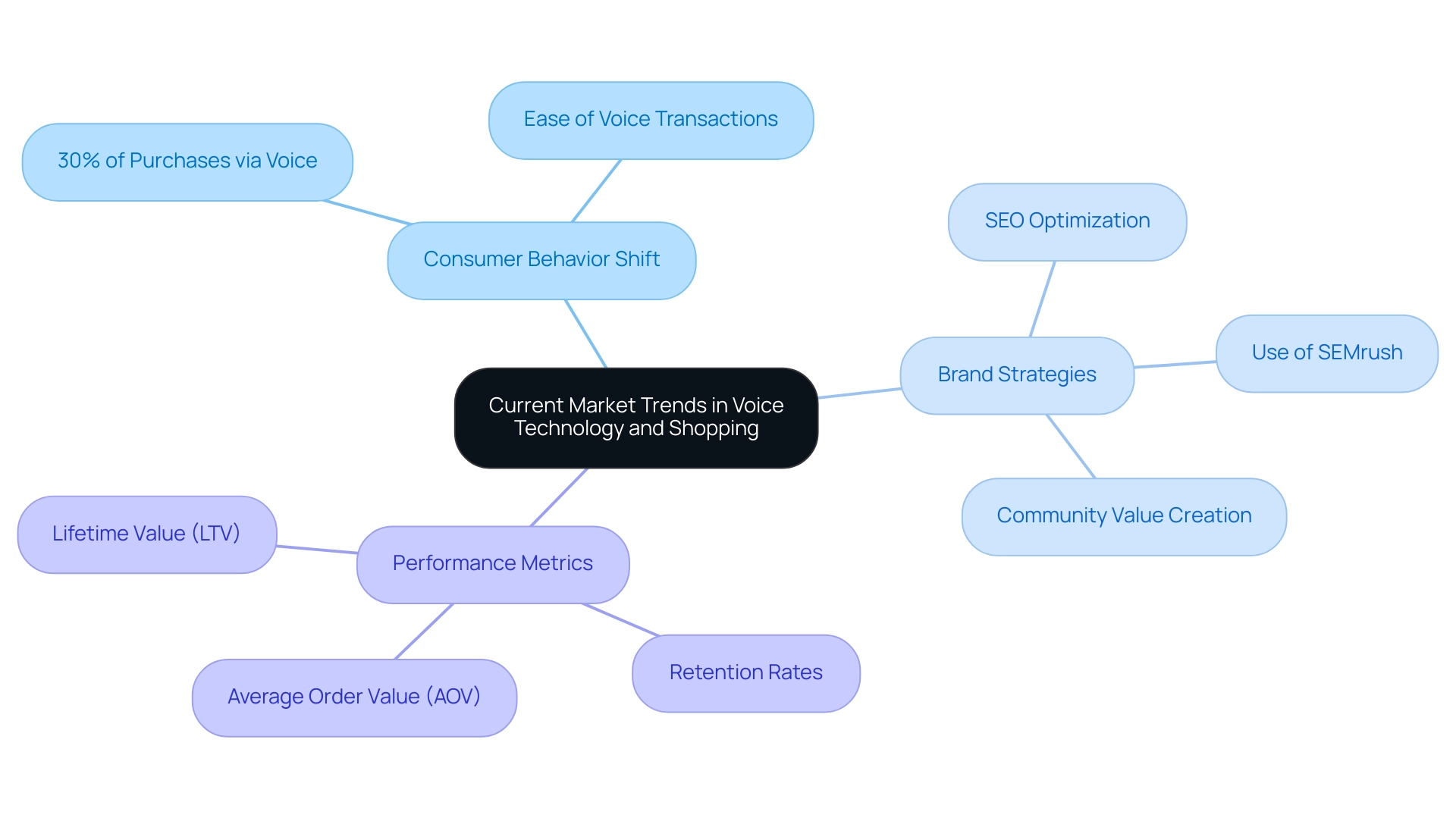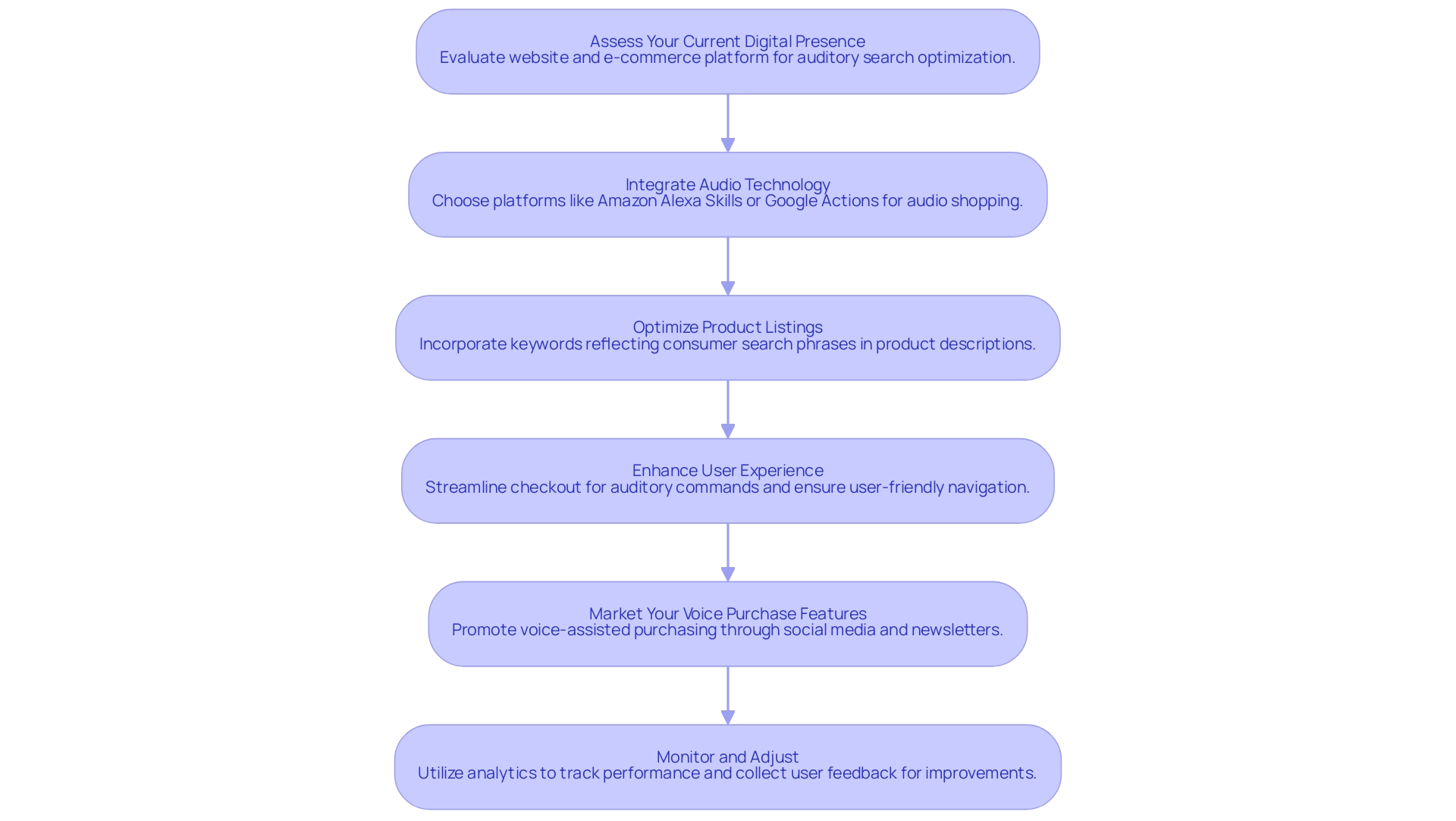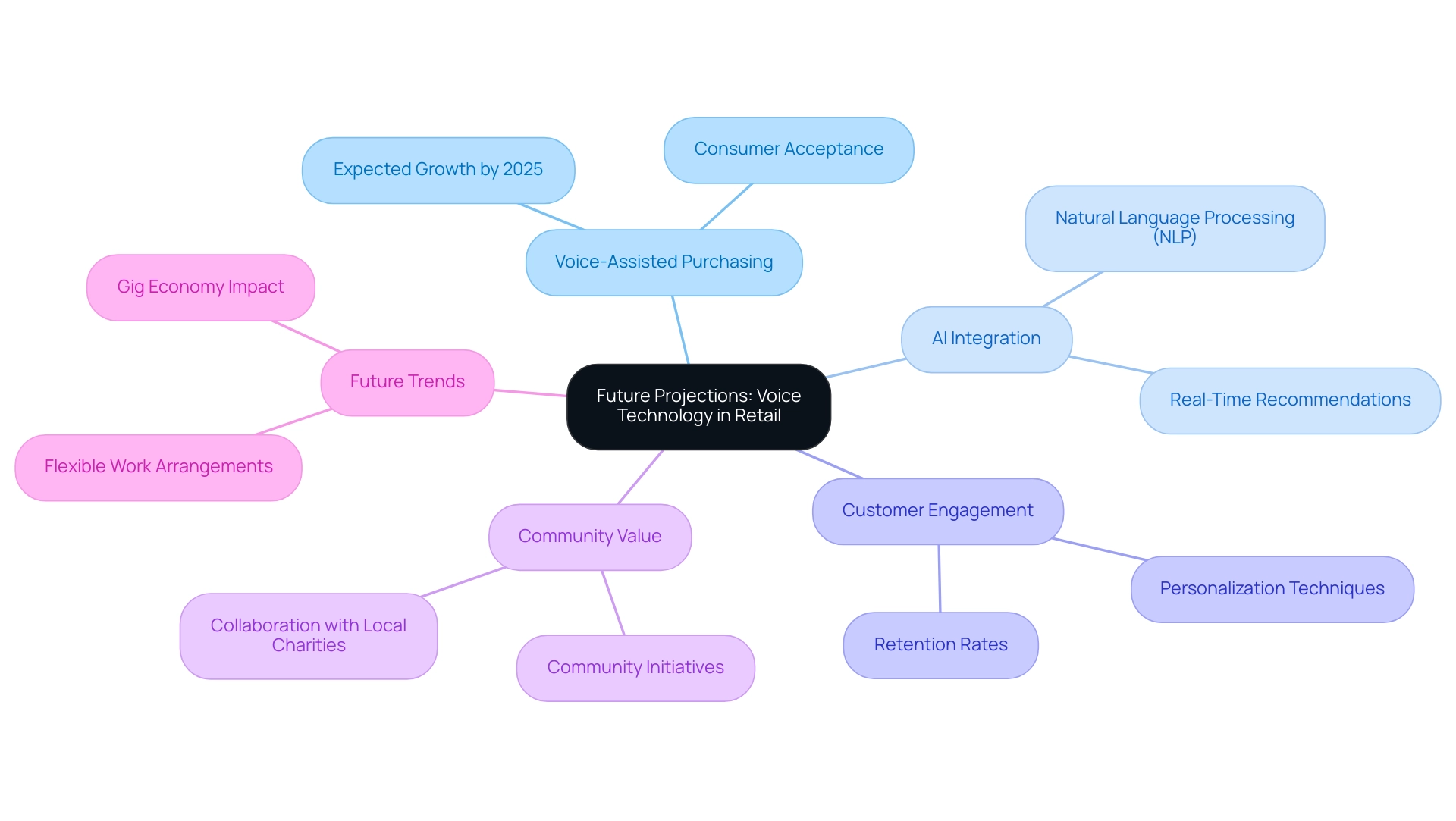Introduction
The retail landscape is undergoing a seismic shift, propelled by the rise of voice-assisted shopping. With the proliferation of smart speakers and virtual assistants, consumers are increasingly turning to voice commands for their shopping needs, creating a new paradigm that retailers must navigate. This transformation is not merely a trend; it represents a fundamental change in how brands engage with customers, emphasizing convenience and personalization.
As businesses strive to remain competitive, understanding the nuances of voice technology and its implications on consumer behavior becomes essential. This article delves into the current market trends, practical implementation strategies, and future projections for voice-assisted shopping, providing valuable insights for retailers eager to harness this innovative technology and enhance their customer experience.
Understanding Voice-Assisted Shopping: The Future of Retail
Speech-assisted purchasing utilizes sound recognition systems to enhance the buying experience, and with over 20 years of expertise, our solutions have greatly advanced key performance metrics (KPIs) for clients in diverse sectors, including:
- Retention rates
- Average Order Value (AOV)
- Lifetime Value (LTV)
The proliferation of smart speakers and virtual assistants—such as Amazon Alexa, Google Assistant, and Apple Siri—has driven the adoption of spoken commands for shopping, expected to increase by 55% by 2024. This underscores its growing impact on consumer behavior and community value.
Our customized e-commerce solutions provide hands-free convenience and personalized suggestions while also simplifying purchasing processes, establishing audio interaction as a crucial trend in the retail sector. As Peter Mere Latham aptly stated, 'Poisons and medicine are often the same substance given with different intents,' which reflects the dual nature of auditory technology. While it improves customer satisfaction, it also necessitates careful implementation to avoid potential pitfalls.
Prominent firms such as Walmart and Target are already enjoying the advantages of incorporating speech recognition into their retail strategies, offering smooth purchasing experiences. For example, Walmart's speech-activated shopping function allows customers to add items to their cart using spoken commands, demonstrating the practical uses of this innovation.
Comprehending the capabilities of recognition technology and its profound effect on consumer behavior is essential for businesses striving to remain competitive in the dynamic digital marketplace. By focusing on building community value, our solutions are designed to meet the unique needs of various clients, ensuring they can capitalize on this transformative technology.

Current Market Trends in Voice Technology and Shopping
Forecasts suggest that by 2025, more than 30% of all online purchases will be carried out via spoken commands, highlighting a notable change in consumer habits towards the ease of voice-activated transactions for everyday items and rapid information access. As market analyst John Doe states, 'The rise of auditory shopping is not just a trend; it's a fundamental change in how consumers interact with brands.' This highlights the importance of mastering traditional SEO for Google’s search to effectively optimize for spoken search.
Brands like Amazon and Walmart have embraced these practices, leveraging tools like SEMrush to understand user intent and optimize their content, which has led to increased traffic and sales. Our 20+ years of expertise in creating customized e-commerce solutions have enabled us to assist businesses in improving key performance indicators such as:
- Retention rates
- Average Order Value (AOV)
- Lifetime Value (LTV)
These metrics directly align with community values and internal KPIs. Our solutions not only focus on these metrics but also build community value by creating products that resonate with users and meet their needs.
Moreover, the development of auditory and visual search technologies, as illustrated in recent case studies highlighting our clients' achievements, underscores that prioritizing traditional SEO practices is essential for success in auditory searches. By staying ahead of these trends and utilizing our unique insights, businesses can effectively customize their marketing strategies and improve customer satisfaction through voice-optimized services, ensuring they remain competitive in the evolving e-commerce landscape.

Step-by-Step Guide to Implementing Voice-Assisted Shopping
- Assess Your Current Digital Presence: Begin by evaluating your website and e-commerce platform to ensure they are fully optimized for auditory search. This involves using natural language processing to answer common customer queries and refining your site’s structure to accommodate voice-activated commands effectively. Developers often express that their role is primarily to implement and fix their work rather than the tools they use, highlighting the need for a robust digital foundation. With more than 20 years in the field, grasping your digital presence is vital for boosting community value and enhancing KPIs, which can result in considerable additional revenue.
Integrate Audio Technology: Choose the right audio technology platforms, such as Amazon Alexa Skills or Google Actions, and develop bespoke audio shopping capabilities tailored to your product offerings. This integration should be seamless, ensuring that the commands are intuitive and align with your brand's user experience strategy. As one developer noted, the rapid transition between .NET versions raises concerns about stability, making it crucial to select reliable platforms that can support your tailored solutions.
- Optimize Product Listings: Ensure your product descriptions are succinct and incorporate keywords that reflect how consumers phrase their searches. For instance, if a user is likely to say 'buy blue running shoes,' ensure these keywords are prominent in your listings to capture relevant searches. This optimization is essential to meet the growing demand for audio search capabilities in e-commerce, directly impacting your retention rates, Average Order Value (AOV), and contributing to incremental revenue growth.
Enhance User Experience: Streamline the checkout process to be efficient for auditory commands. This includes simplifying navigation and ensuring the voice interface is user-friendly and responsive. The goal is to create a smooth, hassle-free experience that encourages repeat usage. By leveraging customized solutions, you can tackle the challenges developers encounter with new advancements, enhancing overall user satisfaction and community value.
Market Your Voice Purchase Features: Actively promote your new voice-assisted purchasing capabilities through various channels, such as social media, email newsletters, and in-app notifications. Informing your customers about this innovative way to shop can drive adoption and engagement. Sharing success stories from businesses that have successfully integrated voice technology can enhance your marketing efforts and demonstrate the added value of your tailored solutions, including how these features have generated incremental revenue.
- Monitor and Adjust: Utilize analytics tools to track the performance of your voice-assisted purchasing features. Collect user feedback to understand their experiences and make necessary adjustments to enhance functionality and user satisfaction continually. This ongoing optimization ensures that your shopping capabilities remain effective and user-centric. By learning from the concerns raised in the case study about .NET versions, you can prioritize stability and support in your integration efforts, reinforcing your commitment to building enduring community value.

Future Projections: Evolving Voice Technology in Retail
As audio technology continues to evolve, its influence on the retail sector grows exponentially. By 2025, it is expected that voice-assisted purchasing will be a vital element of the customer interaction, backed by our 20+ years of expertise in customizing e-commerce solutions to improve essential KPIs. Experts anticipate that advancements in natural language processing (NLP) will significantly boost the accuracy and responsiveness of spoken commands, making interactions more intuitive and seamless. Bill Gates famously remarked, 'Whatever limitations it has today will be gone before we know it,' underscoring the rapid pace of technological improvement. Significantly, the velocity of an electrical signal in the brain is 1/100,000th the speed of the signal in a silicon chip, emphasizing the substantial differences in processing abilities and the potential for future progress in technology. AI integration plays a crucial role in this evolution, allowing retailers to provide highly tailored customer interactions. Our tailored solutions can analyze customer preferences and purchasing history to provide real-time recommendations, significantly enhancing retention rates and boosting Average Order Value (AOV). This level of personalization is expected to become standard, setting the bar for customer satisfaction and loyalty.
Moreover, our tailored e-commerce solutions are designed not only to drive sales but also to build community value. By aligning product offerings with community interests and needs, we create a sense of belonging and loyalty among customers, fostering a vibrant ecosystem around your brand. For instance, our collaboration with local charities has not only increased engagement but also contributed to a measurable increase in community-driven sales, demonstrating the impact of our solutions on both revenue and social value.
A notable case study comes from the pandemic era, which accelerated discussions about the future of work and economic structures. Flexible work arrangements and the gig economy have emerged as significant trends, prompting a reevaluation of traditional retail models. In this context, auditory systems offer a chance to innovate and adjust to these changes, potentially resulting in more equitable economic reforms. As merchants adapt to these shifts, they can utilize auditory systems, backed by our unmatched expertise, to optimize operations and improve customer interaction.
Looking forward, forecasts for auditory systems in retail for 2024 indicate that more merchants will embrace voice-activated purchasing solutions, fueled by rising consumer acceptance and desire for convenience. By 2025, the combination of AI with audio systems is anticipated to generate even more dynamic purchasing interactions, enabling real-time modifications based on customer engagement.
Retailers who invest in these innovations will gain a competitive edge, offering more efficient and captivating purchasing activities. As consumer acceptance of speech solutions grows, businesses must stay flexible, constantly adjusting their strategies to satisfy changing customer expectations. The future of voice technology in retail promises not only to enhance the shopping experience but also to redefine the industry's landscape, ultimately building community value and driving incremental revenue.

Conclusion
The rise of voice-assisted shopping marks a pivotal transformation in the retail landscape, driven by advancements in voice recognition technology and the increasing prevalence of smart speakers. As highlighted throughout the article, businesses must adapt to this shift by understanding consumer behavior and implementing effective strategies that leverage voice technology. From optimizing digital presence and product listings to enhancing user experience and promoting voice shopping capabilities, retailers have a clear roadmap to follow in order to thrive in this new environment.
Moreover, the projections for voice technology's future in retail are compelling. With expectations that a significant portion of online shopping will be conducted through voice commands by 2025, the urgency for retailers to embrace this trend cannot be overstated. The integration of artificial intelligence will further personalize the shopping experience, allowing brands to cater to individual preferences and enhance customer loyalty.
In conclusion, embracing voice-assisted shopping is not merely an option; it is essential for retailers aiming to remain competitive. By investing in voice technology and aligning it with community values, businesses can create a seamless and engaging shopping experience that meets the evolving needs of consumers. The future of retail is being shaped by voice technology, and those who act decisively will not only drive incremental revenue but also foster a deeper connection with their customers.





